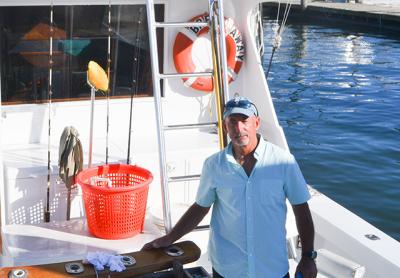Beach Rights in Limbo
Beach Rights in Limbo

Unless new information comes to light, the East Hampton Town Trustees will neither claim nor disclaim ownership of the bay beach at Driftwood Shores in Springs, where there is a dispute between longtime residents and Kenneth and Judith Reiss, the owners of the last lot to be developed. The Reisses have asserted, citing their deed, that their land extends to the mean high water mark, and therefore the beach in front of their house is private property.
In June, several residents of the private community implored the trustees to inform their new neighbors that they, the trustees, own the beach on behalf of the public, and that people have enjoyed unfettered use of it for generations. To be restricted to the beach below the mean high water mark was unrealistic, at best, because of ongoing erosion, they said.
The Reisses insisted at that meeting that they had no objection to anyone’s walking on the beach in front of their house, and said that they felt “under siege,” complaining of hostility and harassment by their neighbors. The trustees, facing multiple challenges to their jurisdiction, asked the neighbors to settle the matter amicably, but agreed to undertake a title search.
Richard Whalen, the trustees’ attorney, told the board on Monday that the earliest deed found in a search by Fidelity National Title is a handwritten document from 1884 that depicts Gardiner’s Bay as the northerly and easterly boundary. Subsequent deeds, he said, list the bay or the mean high water mark as the boundary, bolstering the Reisses’ claim.
“I have two theories,” Mr. Whalen told the trustees. “One is that if we were able to go back further, we would find that at some point the boundary jumps from the bank or the bluff to the bay, but if the title company can’t take us back further, we’re stuck.” The other concerned the trustees’ 1770 sale of 104 acres, including beachfront land in the area, to Benjamin Leek. “I think that that land was probably the Cape Gardiner peninsula,” he said. “The trustee records do not actually describe it very well, and I’ve never seen a deed to it, so I don’t know.”
Thomas Fahey, a Driftwood Shores resident, told the trustees on Monday that he had engaged someone to research the matter, who informed him of the existence of deeds prior to 1884, “and before we put this whole issue to rest, we ought to see whether they can be found.” He asked if the trustees would object to a further search, and was told he was free to do so.
The problem, Mr. Whalen said, is that “sometimes when you go back to the old deeds it can get tricky to know where you are . . . the descriptions are so vague.”
Later in the meeting, Mr. Reiss addressed the board. “Now that you’ve gone back to 1884,” he said, “it would just help us with our neighbors if there was some clarification that, at least as far as the trustees are concerned, we do have title to the high water mark at least, if not to the shore of Gardiner’s Bay, just so we can deal with them in an effective way.”
“We have found no information that contradicts your deed,” Mr. Whalen repeated. “Unless some new information comes to light . . . we’re out of the picture.” Nonetheless, he advised the trustees not to disclaim ownership. “I never say never,” he said, “because there’s always the possibility that somebody someday will come back and find deeds before 1884.”






